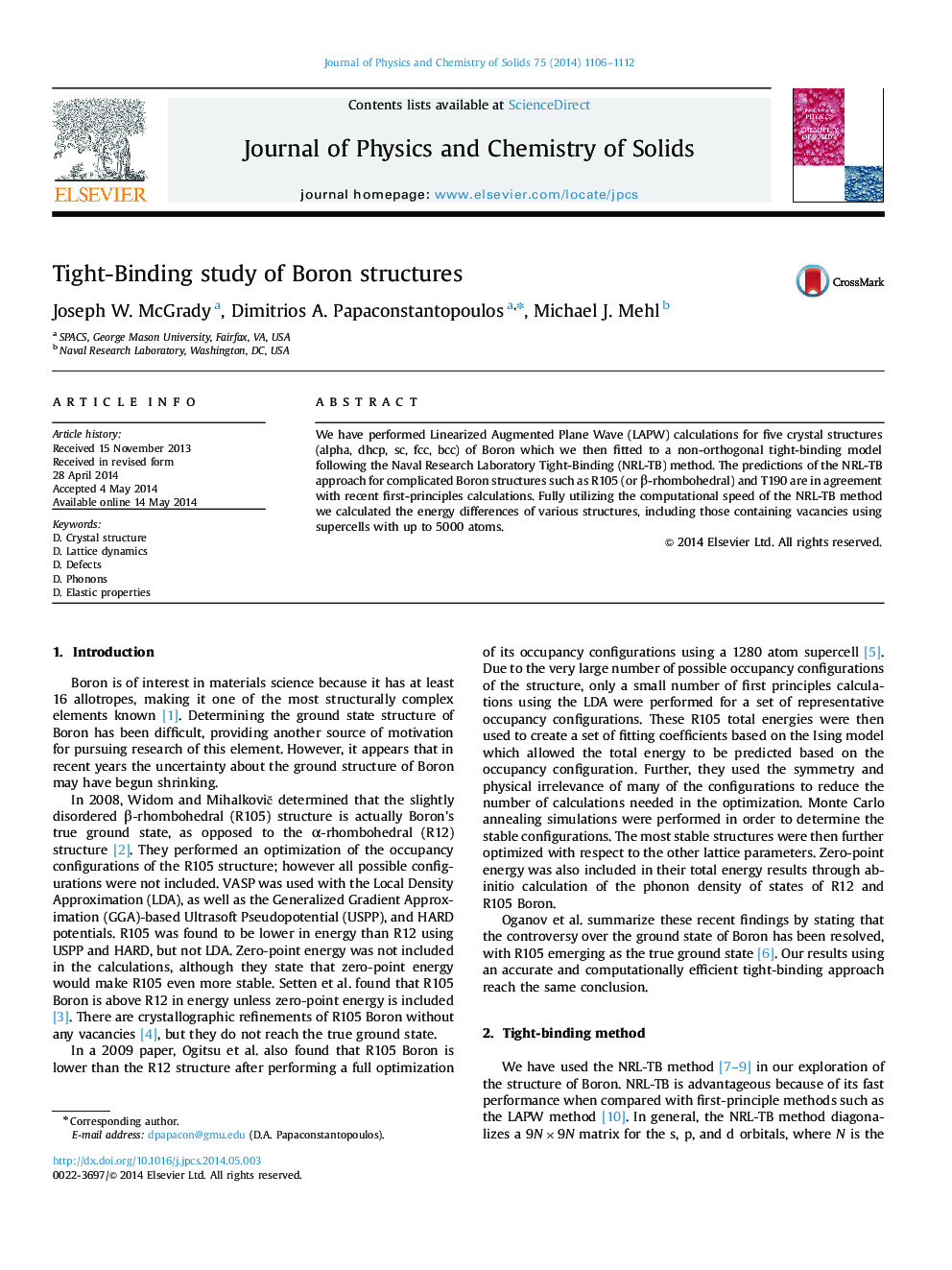| Article ID | Journal | Published Year | Pages | File Type |
|---|---|---|---|---|
| 1515621 | Journal of Physics and Chemistry of Solids | 2014 | 7 Pages |
•Constructed a tight-binding Hamiltonian for Boron using the NRL-TB method.•Emphasized the computational efficiency of the method in handling large supercells.•Determined the ground state in agreement with previous studies.•Calculated vacancy formation energies, phonon spectra and elastic constants.•Calculated the Debye temperature and the zero-point energy.
We have performed Linearized Augmented Plane Wave (LAPW) calculations for five crystal structures (alpha, dhcp, sc, fcc, bcc) of Boron which we then fitted to a non-orthogonal tight-binding model following the Naval Research Laboratory Tight-Binding (NRL-TB) method. The predictions of the NRL-TB approach for complicated Boron structures such as R105 (or β-rhombohedral) and T190 are in agreement with recent first‐principles calculations. Fully utilizing the computational speed of the NRL-TB method we calculated the energy differences of various structures, including those containing vacancies using supercells with up to 5000 atoms.
